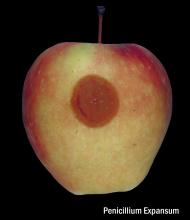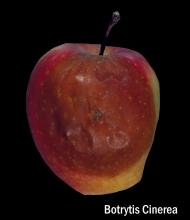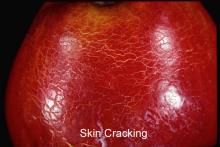Product Description
Maturity and Quality
Firmness of 18 pounds-force, core clear of starch. Firmness (lbs-f) x soluble solids (%) x starch score (1 to 6 scale) should equal 250 at initiation of harvest.
- Firmness, crispness, lack of mealiness
- Flavor, including soluble solids, titratable acidity and flavor volatiles
- Freedom from defects such as bruising, decay, stem or blossom-end cracks, bitter pit, scald, internal browning, shrivel or watercore
- Red skin color intensity and uniformity
Postharvest Handling and Storage
0°C ± 1°C (32°F ± 2°F)
Freezing temperature: -1.7°C (29°F)
| Temperature | 0°C (32°F) | 5°C (41°F) | 10°C (50°F) | 20°C (68°F) |
|---|---|---|---|---|
| ml CO2/kg·hr | 2-5 | 3-7 | 5-10 | 12-25 |
To calculate heat production multiply ml CO2 /kg·hr by 440 to get Btu/ton/day or by 122 to get kcal/metric ton/day.
Ethylene stimulates ripening. Mixed results on the benefits of scrubbing ethylene from storage rooms, depending on harvest maturity and type of storage (air or CA).
90-95%
| Temperature | 0°C (32°F) | 5°C (41°F) | 10°C (50°F) | 20°C (68°F) |
|---|---|---|---|---|
| µl/kg·hr | 1-10 | 2-20 | 5-40 | 20-125 |
Fruit to be stored longer than 1 month benefit from CA storage in terms of retention of acidity and firmness and reduction of scald incidence and severity. CA storage potential is up to 10 months (vs. 6 months in air).
Recommended atmosphere: 1 to 2% O2 + 2 to 4% CO2
Temperature & Controlled Atmosphere Photos

Title: Low O2 Injury
Credits: Don Edwards, UC Davis
Disorders
Bruising. Can be excessive. Gentle handling is important.
Watercore. Can be important later in the harvest season. Water-soaking of the flesh near the core due to an accumulation of sorbitol in the intercellular spaces. Market promptly to avoid internal browning and breakdown.
Bitter Pit. Sunken brown spots on the skin, especially at the calyx end, related to low calcium concentration in the apple. Best controlled by calcium sprays prior to harvest and calcium dips prior to cold storage. Reduced incidence with controlled atmosphere storage.
Superficial Scald. Browning of the skin which develops in cold storage. High susceptibility. Use diphenylamine at label rates. Controlled atmosphere storage delays onset. Ultra-low oxygen CA storage has been effective in some growing areas.
Controlled Atmosphere Damage. Oxygen concentrations below 1% and/or CO2 levels above 10% may induce off-flavor associated with fermentative metabolites. Elevated CO2 injury sypmtoms include partially sunken brown lesions on skin and/or internal browning and cavities. Low O2 injury can result in a purple cast to the skin of Red Delicious apples.
Moldy Core. Caused by several fungi including Alternaria sp., Fusarium sp., Aspergillus and Penicillium. Red Delicious apples are particularly susceptible because of the open or deep sinus cavity. Drenching can increase the incidence of moldy core.
Blue Mold and Grey Mold. The two most important postharvest diseases of Red Delicious apples are caused by Penicillium expansum and Botrytis cinerea. Both fungi are wound pathogens. Sanitation is critical to control of these diseases. Drenching can spread spores of Penicillium and Botrytis to wounds from harvest operations. Use of fungicides during drenching may reduce decay.
References
References from scientifically validated sources will be added in the future.







